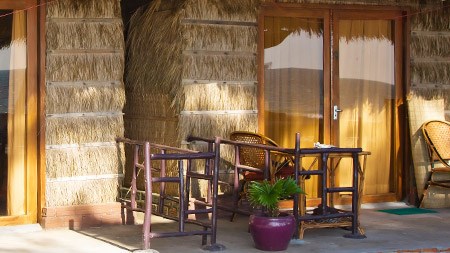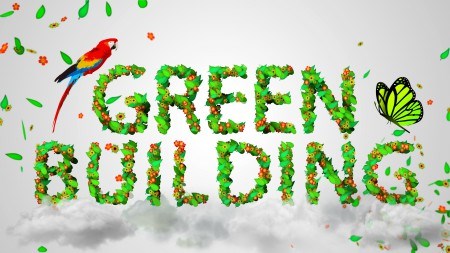Environmentally friendly building materials are becoming more popular as the world moves towards sustainability and efficiency. Here are some ‘green’ building materials to consider.
The Encyclopedia Britannica describes green architecture as “a philosophy of architecture that advocates sustainable energy sources, the conservation of energy, the re-use, and safety of building materials and the siting of a building with consideration of its impact on the environment.”
There has been a distinct shift to ‘go green’ in recent times. The building sector has cottoned on to the benefits of going green, the result of which is a raft of new and exciting green building materials and a resurgence in some age-old materials which are naturally imbued with environmentally-friendly qualities. The following are just a few of the great green building materials and options worth considering.
Straw bales
Straw is a renewable resource that, if kept dry, can last many years. Straw bales bond well with plaster and are known for their superior insulation qualities. Straw bales are easy and quick to build with and can be used to give an otherwise ordinary house beautiful, unique dimensions. A number of straw bale properties have been built in South Africa with great success. Those keen on utilising this material need to take steps to prevent rodent and insect infestation and take the appropriate measures to prevent damp.
Hempcrete
‘Hempcrete’ comprises a mixture of hemp fibre, lime, and water which can be moulded into lightweight blocks. Hempcrete is regarded as a renewable, sustainable building material as hemp can be grown and replenished relatively quickly. Hemp also has great carbon-capturing properties. It is theorised that approximately 165kg’s of carbon can be locked in through the manufacture of a 1m³ of hempcrete wall. Hempcrete is airtight yet breathable and flexible. It’s also free from toxins, impervious to mould and pests, and is highly fire-resistant. Hempcrete is gaining traction overseas. Efforts to commercialise hempcrete and similar products in South Africa are being explored.
Ecomo
Although technically not a stand-alone building material, home building company ‘Ecomo’ makes use of a variety of sustainable building materials and techniques. Ecomo specialises in sustainably built, pre-fabricated homes. Each house is constructed at an off-site South African factory with a view to minimising on-site construction damage and waste and incorporating low maintenance materials. Ecomo homes can be arranged according to whatever layout you desire and allow for organic growth against just about any backdrop.
Recycled plastic
Plastic has many uses. Unfortunately, post-use can cause a lot of damage to the environment. With this in mind, various manufacturers around the world have invented methods to produce building materials and a variety of other useful items from discarded plastic. In South Africa, ‘Primwood Products converts waste plastic into all manner of wood-like products including planks, decking, benches, chairs, bridges, and refuse bins. Such products are environmentally friendly, maintenance-free, durable, and versatile.
Sandbags
Sandbags have long been used to create structures and strong, protective barriers. Sandbag structures are capable of resisting all manner of weather conditions and can be erected quickly, easily, and cheaply. In contrast to bricks and other fired building materials, sandbags do not use any energy in their manufacture. Clean, usable sand is also plentiful at most sites which cut down on material and transportation costs. To put things into perspective, it is estimated that the carbon dioxide emission of an average sandbag wall is 96% less than a conventional brick wall. In South Africa, Eco-Beam International has completed a number of successful sandbag-based construction projects. Overall, sandbags make for a great, environmentally friendly building material.
The way forward
These are but a few of the green building material options currently available on the market. With the way things are going, it’s clear that going green really is the right thing to do. As such, do yourself and the earth a favour and ask your builder about using green materials and techniques before embarking on your next building project.




